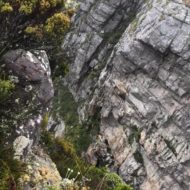Last week you heard your peers present, and offered your feedback. Many of you sent me your feedback. Before the end of the day today I’ll send the individual emails to everyone with your peers’ comments and suggestions. In preparation for this week’s presentations, please post a brief paragraph with the following information: Your hypothesis …
Author Archives: Maria Mercedes Carrion PhD
Nov. 12-14. The Underworld, Prophecy, and Mass Destruction.
This week we read and heard a series of ideas and arguments about the myths of the underworld and their relation to terms of the sacred: miracles, prophecy, hope, and peace. In our discussions, we sought to understand how in American Millenialism oftentimes these myths are correlated with reptile people, mass destruction, war, atomic energy …
Continue reading “Nov. 12-14. The Underworld, Prophecy, and Mass Destruction.”
Oct. 29-31. On Heaven, with Hildegard, Bingen, water, gardens, and cosmographies
We are not going to begin our writing with the regular prompter-of-the-week here, this week. However, all and any of you wish to publish a FREE-FORM, optional blogpost related to Hildegard, to Bingen, to cosmic humanity, to ruins, monasteries, or gardens, or to any other question about, in, on, or at sacred spaces, you can …
Continue reading “Oct. 29-31. On Heaven, with Hildegard, Bingen, water, gardens, and cosmographies”
Oct. 22-24. Myth and Ritual, Cosmologies, and Evidence
This week we discussed the critical importance that origin myths and material objects have in the composition, sustenance, and interpretation of sacred spaces. How does an act of divination encompass the space around it and makes it sacred? How does an object, like a tray, become more than a mere marginal ornament or a prop …
Continue reading “Oct. 22-24. Myth and Ritual, Cosmologies, and Evidence”
Oct. 8-10. Promised Land
Write a reflection on the correspondences of the ‘promised land’ with the Tower of Babel. Focus on how translation and transference (as we discussed in class) help us understand the histories of Beer-Sheba and the journey from the wilderness to the sea as literary engagements. Please, post your reflection by Monday at 5pm. Happy Fall …
Oct. 1-3. Weaving Sacredness with Tales and Polygons
This week we seek to understand the importance of geopolitical negotiations in the constitution of sacred spaces. By Thursday we will have looked at two different, yet interrelated cases: one, the dedication, ruination, reconstitution, and recognition of the sacred spaces of the owl dunes in Rajasthan and, on the other, the geometric tales of the …
Continue reading “Oct. 1-3. Weaving Sacredness with Tales and Polygons”
Sept 24-26. Ciphers of Sacredness and Architecture
This week the readings by González, Bier, and Koliji as well as the class discussions revolved around our attempt to understand the corresponding ways in which abstraction, movement, geometry, mathematics, and philosophy work in composing metaphors of space and place. On Tuesday we developed working definitions of the concepts of abstraction, kinetics, and geometry as …
Continue reading “Sept 24-26. Ciphers of Sacredness and Architecture”
Sept 17-19. Flesh, Bodies, Migrant Sacred Spaces
This week we are working on trying to understand the correspondences between flesh, bodies, and migration, and how they contribute to the composition and interpretation of sacred spaces. To to that, we are going to expand the discussion we began last week regarding place and the study of religions, as well as the usefulness, or …
Continue reading “Sept 17-19. Flesh, Bodies, Migrant Sacred Spaces”
Sept. 10-12. Place and the Study of Religions
In the assigned readings for this week, Mary MacDonald and Loida Martell present two different, yet related arguments to tease out the role that place play in the constitution of a sacred space. Based on these two readings, you were asked to: 1. Reflect upon the two readings assigned for this week (MacDonald’s and Martell’s), …
Continue reading “Sept. 10-12. Place and the Study of Religions”
Sept 5. Sacredness and Architecture
On this first week we read in the “Introduction” (pages 8-11) to the Metropolitan’s guide to Islamic arts how geometry, distances, and calculations in space and designs contribute to the branding of a type of architecture. To understand and read competently the ways in which sacredness and architecture correspond with each other, we read Lang’s …
